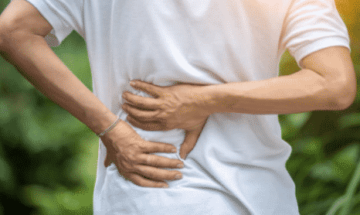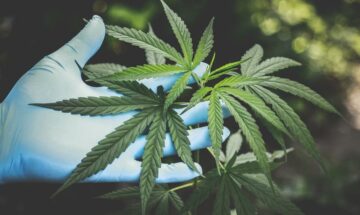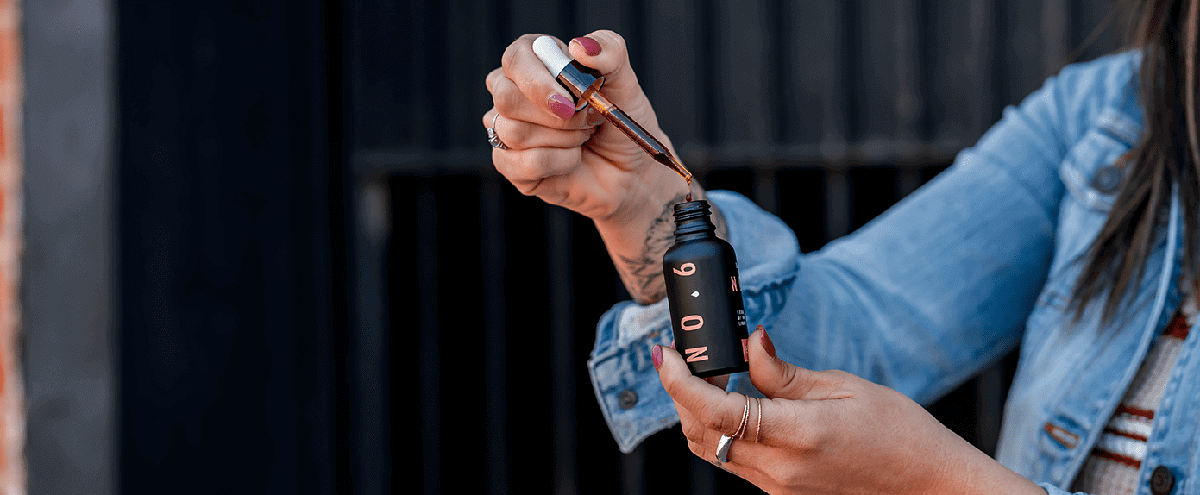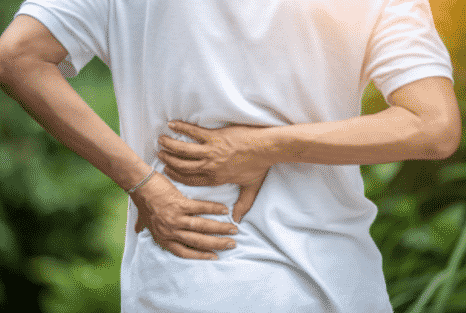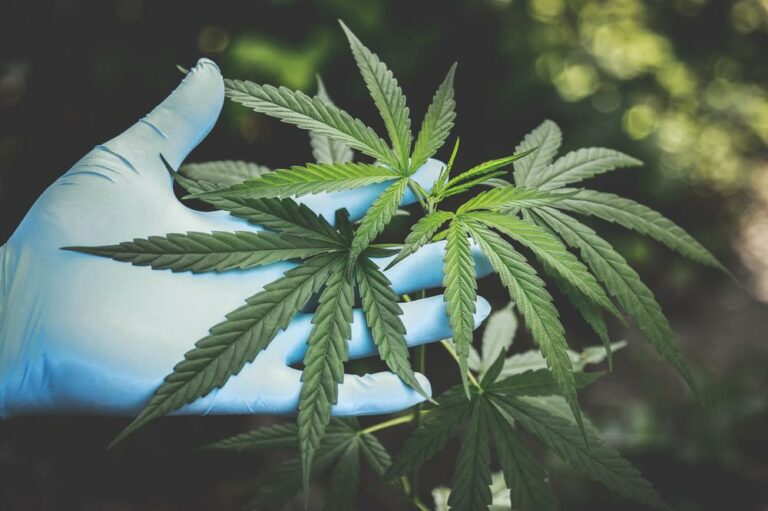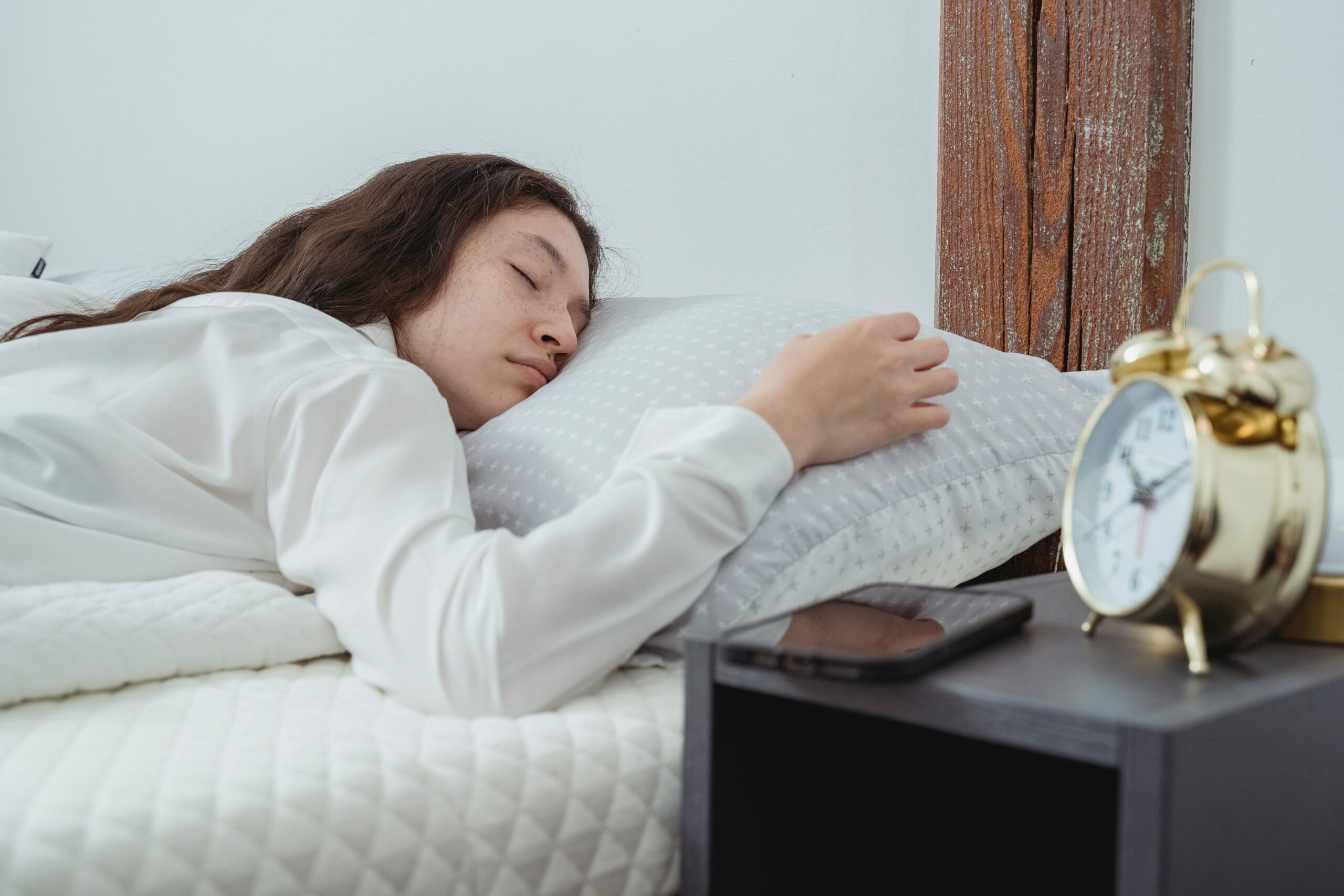
- How long it takes for CBD (cannabidiol) to begin taking effect depends on several factors, such as the delivery method, CBD potency, CBD dosage, frequency of use, body weight, lifestyle, and food choices.
- CBD is relatively safe(1). Unlike THC or tetrahydrocannabinol, the primary psychoactive compound of cannabis plants, CBD does not induce a euphoric effect.
- Inhaling CBD is the fastest way to benefit from cannabidiol(2). The effects of CBD through the inhalation route usually start within 2 to 15 minutes(3).
- Although inhaling CBD using vape pens produces the quickest results, vaping may damage the lungs(4).
How Long Do CBD’s Effects Last?
How long the effects of cannabidiol last depends on several different factors, including method of consumption used, CBD potency, CBD dosage, frequency of CBD intake, and the user’s body weight, lifestyle, and food preferences.
Delivery Methods
Delivery methods or administration routes are how CBD is taken into the body. Some of the standard delivery methods are as follows:
- Inhalation
- Ingestion
- Sublingual
- Topical Application
- Transdermal
How Long Should an Individual Have to Wait for CBD Oil to Work?
CBD’s onset time varies for each delivery method. Often, individuals use different administration routes to optimize the therapeutic effects of CBD(5).
- Inhalation
Smoking or vaping CBD is the fastest way to benefit from the nonpsychoactive compound(6). The onset time of cannabidiol via the inhalation route is between 2 to 15 minutes(7).
However, the CDC (Centers for Disease Control and Prevention) and the FDA (Food and Drug Administration) warn individuals against the use of THC-containing e-cigarettes or any vaping products, mainly from informal sources, such as family and friends(8).
In addition, most lung injury cases in the United States are linked to vaping(9).
Moreover, nicotine, a primary agent in regular cigarettes and vape pens, is highly addictive(10). Therefore, the inhalation route may not be suitable for some consumers.
Meanwhile, a 2020 animal study from Pharmacology Biochemistry and Behavior was conducted on the effects of the vapor inhalation of CBD(11).
The researchers observed concentration-related plasma CBD levels in Wistar rats that were within the range produced by 10 or 30mg of CBD per kilogram of the subjects’ body weight via intraperitoneal injection.
Through an intraperitoneal injection, a substance is administered via the peritoneum, a large membrane in the abdominal cavity that supports internal organs.
The result showed that the vapor-inhalation approach may be a suitable preclinical model for investigating inhaled cannabidiol. However, this administration route produced hypothermia in Wistar rats(12).
Hypothermia is an occurrence when the body loses more heat due to prolonged exposure to frigid temperatures.
- Ingestion
A study from Molecules mentioned that oral CBD administration is subject to the first-pass effect(13). During the first-pass effect, the liver and digestive tract partly break down substances before these substances become available in the bloodstream(14).
Research from the University of Minnesota suggested that high-fat foods may increase oral CBD absorption into the body(15).
The study’s authors hypothesized that the amount of CBD may increase by four times when individuals take CBD with food compared to taking it on an empty stomach(16).
The onset time of CBD via the ingestion route is between 30 to 90 minutes(17).
Consumers can choose CBD edibles like CBD gummies, CBD capsules, and CBD oils for the ingestion route. CBD oil products usually come with a dropper.
- Sublingual
The sublingual (under the tongue) route relies on the mucous membrane under the tongue to absorb cannabidiol(18). The sublingual delivery method is also considered a fast-acting solution with a 15- to 30-minute onset(19).
However, unlike vaporizing or smoking, the sublingual route does not expose the lungs to heat or tar. Hence, during administration, users do not deal with the smoky taste or smell of CBD and other issues like throat irritation, cough, and dry mouth(20).
Oromucosal sprays, medicated lozenges, dissolvable strips, and CBD oil tinctures are standard sublingual products.
- Topical Application
Topical CBD products are applied to one’s skin for localized relief. The onset time of CBD via the topical route is between 15 to 30 minutes(21).
CBD topicals are available in balms, lotions, salves, and creams.
- Transdermal
Transdermal means active ingredients are delivered across the skin for systematic distribution. Usually, CBD takes effect within 15 to 30 minutes via this administration route(22).
A 2020 randomized controlled trial from Current Pharmaceutical Biotechnology hypothesized that transdermally applied CBD oil may result in significant improvement in pain and other sensations in individuals with peripheral neuropathy(23).
Peripheral neuropathy is dysfunction or damage to one or more nerves leading to pain, numbness, and weak muscles(24).
Meanwhile, a European Journal of Pain study suggested that transdermal CBD may reduce arthritis pain-related behaviors and inflammation without detrimental side effects(25).
Transdermal CBD products may be in the form of CBD patches or gels.
CBD Potency
Cannabinoid products are highly individualized, unlike pharmaceutical drugs delivered in specific doses(26).
For instance, users can easily dose a standard tincture dropper accurately and consistently. Tinctures are suitable for standard and microdose ranges(27).
For alcohol-based tinctures, 25 to 30 drops are equivalent to 1ml. The subsequent measurement users should know is the potency of the liquid, which is typically on the label, expressed in milligrams of cannabidiol per milliliter of liquid (mg/ml)(28).
CBD potency is often in 10mg to 20mg/ml. However, it can be as high as 50mg/ml(29). For this reason, consumers must read the label carefully to calculate the dosage accurately.
CBD Dosage
Generally, doses are in milligrams. Consumers can find out how much mg of CBD or THC they are taking by using these formulas(30):
Volume (in ml) x potency (in mg/ml) = dose (in mg)
or
Recommended dose (in mg) ÷ potency (mg/ml) = volume (in ml)
Meanwhile, 20 drops are equivalent to 1ml for an oil infusion dose(31).
For example, 17mg of CBD per ml means every milliliter (20 drops) contains 17mg of CBD or 0.85mg of CBD per drop. Therefore, if users want to take a 5mg dose of CBD, they have to divide five by 0.85 to get the number of drops they should take.
It is worth noting that most CBD products are unregulated. Therefore, no standard CBD dosage is available for medical conditions like cancer, arthritis, diabetes, mood disorders, or depression.
The FDA acknowledges that several states have passed legislation that removes restrictions on the medical use of cannabis and its derivatives(32). Still, the agency believes in conducting further medical research into the effectiveness and safety of such products(33).
Nevertheless, the FDA has approved Epidiolex, a CBD-derived oral solution(34). Epidiolex is utilized to treat rare and severe epilepsy and seizures associated with tuberous sclerosis complex in patients one year of age and older.
Tuberous sclerosis complex or TSC occurs when benign tumors grow in several body parts.
A placebo-controlled randomized clinical trial from JAMA Neurology examined the safety and efficacy of CBD versus placebo against seizures associated with TSC(35).
The 2020 clinical trial featured 224 patients with TSC who received 25mg or 50mg of CBD per kilogram of body weight daily or matched placebo.
The researchers observed that both CBD dosages appeared efficacious in reducing TSC-associated seizures compared with placebo. However, 25mg of CBD led to fewer adverse effects(36).
Meanwhile, a 2019 study from the journal Molecules evaluated the efficacy and safety of using CBD and conventional anti-epileptic drugs to help with treatment-resistant epilepsy(37).
The 2019 study mentioned that CBD doses daily ranging from 5 to 20mg per kilogram of body weight were generally well tolerated(38).
Frequency of Use
The frequency of CBD intake is another determining factor of how long CBD’s effects last.
A 2018 cross-sectional study of CBD users featured 2,409 respondents recruited through social media(39). The online survey sought to determine whom, how, and why individuals used CBD.
Of the 2,409 participants, about 926 used CBD for general health and well-being, while 1,483 used CBD for specific medical conditions.
Of the 926 respondents who used CBD for general health, 56.47% said they took CBD less than once per day, while 26.92% used CBD more than once.
Meanwhile, of the 1,483 participants who used CBD for a specific medical condition, 43.53% took CBD less than once per day, whereas 73.08% used CBD more than once.
Sublingual delivery was the most frequently used administration route in both groups(40).
Body Weight and Lifestyle
Every individual has a unique body and lifestyle. Hence, how long the effects of CBD last differ.
Regardless of body size and composition, individuals may have slow, fast, or average metabolism(41). Slow metabolism means a person burns lesser calories, meaning more calories get stored as fat in the body.
Cannabinoids like CBD and THC are fat-soluble compounds stored in the body’s fat cells.
Suppose users have a high body fat percentage. They will probably experience longer durations of CBD’s effects because their bodies may take more time processing amounts of CBD stored in the fat cells.
On the other hand, those with fast metabolism burn calories quicker(42). Since active individuals may process CBD faster, the effect of CBD may not last as long.
However, a study suggested that moderate- to high-intensity exercise may increase endocannabinoid levels, particularly anandamide, supporting previous research that exercise may have antidepressant-like effects(43).
Anandamide is a fatty acid neurotransmitter. CBD may enhance anandamide signaling and reduce psychotic symptoms(44).
Food
Cannabidiol is a highly lipophilic molecule. Hence, the compound may dissolve in the food’s fat content, increasing its solubility and absorption(45). This occurrence may affect the amount of time CBD stays in one’s system.
For this reason, orally administered cannabis is often consumed with food containing dietary fat(46). Examples of such food include cookies and brownies.
A study from the American Journal of Translational Research suggested that the co-administration of pharmaceutical lipid excipients (drug carrier) and dietary fats may substantially increase the exposure to cannabis-based medicines or orally administered cannabis(47).
How Long Does CBD Oil Stay in One’s System?
How long CBD stays in one’s system depends on its bioavailability and half-life.
Bioavailability is the rate at which a particular substance becomes entirely available to one’s system.
The administration route and the dose of a specific drug significantly impact the extent and rate of bioavailability(48).
For example, the oral bioavailability of cannabidiol is low, usually between 13 to 19%, because it undergoes first-pass metabolism(49).
Hence, oral CBD and other substances with a relatively low bioavailability require a larger dose to reach the minimum efficient concentration threshold(50).
For instance, some CBD gummies contain 10 to 25mg of CBD. Since CBD edibles have a low absorption rate, 25mg of CBD gummies is likely a better choice.
Generally, the effects of CBD edibles, like gummies, may last between 6 to 8 hours(51).
Meanwhile, half-life refers to the time it takes for a specific drug to be reduced by 50% of its starting dose.
After 3.3 half-lives, 90% of a given drug will have been eliminated. Furthermore, 94% to 97% of a substance will have undergone elimination after 4 to 5 half-lives(52).
After 4 to 5 half-lives, a drug’s plasma concentration will be below a clinically relevant concentration and thus be removed from the body(53).
A study from Frontiers in Pharmacology indicated that the half-life of CBD is between 1.4 and 10.9 hours following oromucosal spray administration, 2 to 5 days after oral administration, 24 hours after intravenous therapy, and 31 hours right after smoking CBD(54).
Intravenous therapy is a medical procedure that delivers nutrients, medications, and fluids directly into one’s vein.
CBD Storing: How to Properly Store CBD
The proper way to store CBD oil products is in an upright position. Consumers should put them in a dark place without heat, moisture, and extreme light.
Those who use CBD edibles may keep their CBD in the refrigerator to protect the products from going bad.
How Long Do CBD Products Last on the Shelf?
Some CBD products may last for one to two years, depending on how users store them. Therefore, consumers must store their CBD items properly and know their expiration dates.
How Long Does CBD Oil Last Before It Runs Out?
Here is an example to give consumers an idea of how long a 2,000mg CBD oil bottle may last:
A consumer purchases a 2,000mg CBD oil bottle. Each drop of oil has 1mg of CBD. If the user wants to take two doses of cannabidiol per day, the equivalent is 20mg (20 drops).
When the consumer divides the 2,000mg of CBD by 20mg, the result is 100. Thus, the bottle of CBD oil will last 100 days.
How CBD May Affect the Body
CBD is a nonpsychoactive cannabinoid present in the cannabis plant. Although CBD is a relevant component of medical marijuana, it mostly comes from hemp plants(55).
CBD has numerous purported health benefits, including anti-inflammatory, anticonvulsant, and analgesic properties(56). One of the potential benefits of CBD is its putative positive effects on chronic pain(57).
CBD’s therapeutic potential may be connected to how CBD works and interacts with the ECS (endocannabinoid system).
The ECS is a neuromodulatory system that plays a crucial role in bodily homeostasis or balance. It comprises cannabinoid receptors (CB1 and CB2), enzymes, and endocannabinoids.
Cannabinoids like CBD and THC may interact with the cannabinoid receptors to elicit a response(58).
While CBD has a low binding affinity for both CB1 and CB2 receptors, the compound may behave as a CB2 receptor inverse agonist, possibly contributing to CBD’s anti-inflammatory potential(59).
An inverse agonist binds to the same receptor as an agonist. However, it produces an oppositive pharmacological response.
On the other hand, CB1 receptors present within the pain pathways of the brain and spinal cord may affect CBD-induced analgesic effects(60).
How Does CBD Make Individuals Feel?
The time it takes for CBD to build up in the system and create results depends on several factors. For the first few days or weeks, some users may feel nothing. However, that does not mean CBD is not working.
Anecdotal reports indicate that when CBD hits, most individuals may feel calmer and less stressed(61). Some CBD users also report pain relief.
Still, everyone is unique. Although CBD works for some people, it may not work for others. Therefore, CBD is not a cure for all.
Is CBD Safe?
CBD has a favorable safety profile(62). Still, the cannabinoid is not a biologically inert compound and can thus potentially interact with other substances or prescription medications(63).
Aside from safety, CBD’s legality is also of significant interest. The 2018 Farm Bill allows the cultivating, manufacturing, transporting, and selling of industrial hemp products containing less than 0.3% THC concentration(64).
The leniency of legal restrictions on cannabis and its chemical constituents, including CBD and THC, has also led to the rapid proliferation of cannabis products, particularly CBD items(65).
High-quality CBD products featuring hemp extracts like full-spectrum CBD oil, broad-spectrum CBD oil, and CBD isolates are widely available.
Full-spectrum and broad-spectrum CBD oil contain all compounds of the cannabis plant. However, the broad-spectrum variant does not have THC.
On the other hand, CBD isolates come from pure cannabidiol. Although CBD isolates do not result in THC-like intoxication, they are not risk-free(66).
Generally, the potential risks and side effects of CBD include(67):
- Problems in the digestive system, like gastrointestinal distress
- Changes in mood
- Changes in alertness
Therefore, consumers who want to try CBD for the first time for their health and overall wellness must consult a doctor versed in cannabis use for medical advice.
Does a Drug Test Screen for CBD?
Drug tests do not screen for cannabidiol because the compound does not cause a psychoactive effect. However, CBD products containing traces of THC may build up in the body when taken regularly within four to six days(68).
A positive drug test is possible when there is an increased THC level in one’s system.
- An Update on Safety and Side Effects of Cannabidiol: A Review of Clinical Data and Relevant Animal Studies https://www.ncbi.nlm.nih.gov/pmc/articles/PMC5569602/
- How to Safely Use CBD: Should You Inhale, Spray, Apply, or Eat It? https://www.consumerreports.org/cbd/how-to-use-cbd-inhale-spray-apply-eat/
- Healing With CBD, page 190. https://drive.google.com/file/d/1AGlxnhS2SoFeOXEuysv75bd_C9pEnwsU/view
- Is It Safe to Vape CBD? https://www.consumerreports.org/cbd/is-it-safe-to-vape-cbd/
- Healing With CBD, page 189. https://drive.google.com/file/d/1AGlxnhS2SoFeOXEuysv75bd_C9pEnwsU/view
- How to Safely Use CBD: Should You Inhale, Spray, Apply, or Eat It? https://www.consumerreports.org/cbd/how-to-use-cbd-inhale-spray-apply-eat/
- Healing With CBD, page 190. https://drive.google.com/file/d/1AGlxnhS2SoFeOXEuysv75bd_C9pEnwsU/view
- Outbreak of Lung Injury Associated with the Use of E-Cigarette, or Vaping, Products https://www.cdc.gov/tobacco/basic_information/e-cigarettes/severe-lung-disease.html
- Ibid.
- 5 Vaping Facts You Need to Know https://www.hopkinsmedicine.org/health/wellness-and-prevention/5-truths-you-need-to-know-about-vaping
- Vapor inhalation of cannabidiol (CBD) in rats https://www.ncbi.nlm.nih.gov/pmc/articles/PMC6746317/
- Ibid.
- Cannabinoid Delivery Systems for Pain and Inflammation Treatment https://www.ncbi.nlm.nih.gov/pmc/articles/PMC6222489/
- First Pass Effect https://www.ncbi.nlm.nih.gov/books/NBK551679/
- High-Fat Foods Can Increase Oral Cannabidiol Absorption Into the Body https://www.sciencedaily.com/releases/2019/08/190813130426.htm
- Ibid.
- Healing With CBD, page 191.https://drive.google.com/file/d/1AGlxnhS2SoFeOXEuysv75bd_C9pEnwsU/view
- Healing With CBD, page 207.https://drive.google.com/file/d/1AGlxnhS2SoFeOXEuysv75bd_C9pEnwsU/view
- Ibid.
- CBD: A Patient’s Guide to Medicinal Cannabis, page 105. https://drive.google.com/file/d/1MILU_6ZjYkII-XMUPHLFPiPQbrz__5Sh/view
- Healing With CBD, page 193. https://drive.google.com/file/d/1AGlxnhS2SoFeOXEuysv75bd_C9pEnwsU/view
- Healing With CBD, page 194. https://drive.google.com/file/d/1AGlxnhS2SoFeOXEuysv75bd_C9pEnwsU/view
- The Effectiveness of Topical Cannabidiol Oil in Symptomatic Relief of Peripheral Neuropathy of the Lower Extremities https://pubmed.ncbi.nlm.nih.gov/31793418/
- Neuropathy (Peripheral Neuropathy) https://my.clevelandclinic.org/health/diseases/14737-neuropathy
- Transdermal Cannabidiol Reduces Inflammation and Pain-Related Behaviours in a Rat Model of Arthritis https://www.ncbi.nlm.nih.gov/pmc/articles/PMC4851925/
- CBD: A Patient’s Guide to Medicinal Cannabis, page 97. https://drive.google.com/file/d/1MILU_6ZjYkII-XMUPHLFPiPQbrz__5Sh/view
- CBD: A Patient’s Guide to Medicinal Cannabis, page 100. https://drive.google.com/file/d/1MILU_6ZjYkII-XMUPHLFPiPQbrz__5Sh/view
- Ibid.
- Ibid.
- CBD: A Patient’s Guide to Medicinal Cannabis, page 102. https://drive.google.com/file/d/1MILU_6ZjYkII-XMUPHLFPiPQbrz__5Sh/view
- Ibid.
- FDA Regulation of Cannabis and Cannabis-Derived Products, Including Cannabidiol (CBD) https://www.fda.gov/news-events/public-health-focus/fda-regulation-cannabis-and-cannabis-derived-products-including-cannabidiol-cbd
- Ibid.
- FDA Approves New Indication for Drug Containing an Active Ingredient Derived from Cannabis to Treat Seizures in Rare Genetic Disease https://www.fda.gov/news-events/press-announcements/fda-approves-new-indication-drug-containing-active-ingredient-derived-cannabis-treat-seizures-rare
- Add-on Cannabidiol Treatment for Drug-Resistant Seizures in Tuberous Sclerosis Complex https://jamanetwork.com/journals/jamaneurology/fullarticle/2774314
- Ibid.
- Use of Cannabidiol in the Treatment of Epilepsy: Efficacy and Security in Clinical Trials https://www.mdpi.com/1420-3049/24/8/1459/htm
- Ibid.
- A Cross-Sectional Study of Cannabidiol Users https://www.ncbi.nlm.nih.gov/pmc/articles/PMC6043845/
- Ibid.
- The Truth About Metabolism https://www.health.harvard.edu/staying-healthy/the-truth-about-metabolism
- Ibid.
- Intense Exercise Increases Circulating Endocannabinoid and Bdnf Levels in Humans–— Possible Implications for Reward and Depression https://sites.oxy.edu/clint/physio/article/intenseexerciseincreasescirculatingendocannabinoidandbdnflevelsinhumans.pdf
- Cannabidiol Enhances Anandamide Signaling and Alleviates Psychotic Symptoms of Schizophrenia https://www.ncbi.nlm.nih.gov/pmc/articles/PMC3316151/
- A Systematic Review on the Pharmacokinetics of Cannabidiol in Humans https://www.ncbi.nlm.nih.gov/pmc/articles/PMC6275223/
- Dietary Fats and Pharmaceutical Lipid Excipients Increase Systemic Exposure to Orally Administered Cannabis and Cannabis-Based Medicines https://www.ncbi.nlm.nih.gov/pmc/articles/PMC5009397/
- Ibid.
- Drug Bioavailability https://www.ncbi.nlm.nih.gov/books/NBK557852/
- A Systematic Review on the Pharmacokinetics of Cannabidiol in Humans https://www.ncbi.nlm.nih.gov/pmc/articles/PMC6275223/
- Drug Bioavailability https://www.ncbi.nlm.nih.gov/books/NBK557852/
- Healing With CBD, page 191. https://drive.google.com/file/d/1AGlxnhS2SoFeOXEuysv75bd_C9pEnwsU/view
- Half-Life https://www.ncbi.nlm.nih.gov/books/NBK554498/
- Ibid.
- A Systematic Review on the Pharmacokinetics of Cannabidiol in Humans https://www.frontiersin.org/articles/10.3389/fphar.2018.01365/full
- Cannabidiol (CBD)-What We Know and What We Don’t https://www.health.harvard.edu/blog/cannabidiol-cbd-what-we-know-and-what-we-dont-2018082414476
- Cannabidiol https://pubchem.ncbi.nlm.nih.gov/compound/Cannabidiol
- Cannabidiol as a Treatment for Chronic Pain: A Survey of Patients’ Perspectives and Attitudes https://www.ncbi.nlm.nih.gov/pmc/articles/PMC8107012/
- Cannabidiol https://pubchem.ncbi.nlm.nih.gov/compound/Cannabidiol
- Cannabidiol Displays Unexpectedly High Potency as an Antagonist of CB1 and CB2 Receptor Agonists In Vitro https://bpspubs.onlinelibrary.wiley.com/doi/full/10.1038/sj.bjp.0707133
- Cannabidiol https://pubchem.ncbi.nlm.nih.gov/compound/Cannabidiol
- Reasons for Cannabidiol Use: A Cross-Sectional Study of CBD Users, Focusing on Self-Perceived Stress, Anxiety, and Sleep Problems https://jcannabisresearch.biomedcentral.com/articles/10.1186/s42238-021-00061-5
- An Update on Safety and Side Effects of Cannabidiol: A Review of Clinical Data and Relevant Animal Studies https://www.ncbi.nlm.nih.gov/pmc/articles/PMC5569602/
- Potential Adverse Drug Events and Drug-Drug Interactions with Medical and Consumer Cannabidiol (CBD) Use https://www.ncbi.nlm.nih.gov/pmc/articles/PMC6678684/
- Hemp Production and the 2018 Farm Bill https://www.fda.gov/news-events/congressional-testimony/hemp-production-and-2018-farm-bill-07252019
- Cannabidiol: Science, Marketing, and Legal Perspectives https://www.ncbi.nlm.nih.gov/books/NBK565434/
- Ibid.
- What You Need to Know (And What We’re Working to Find Out) About Products Containing Cannabis or Cannabis-derived Compounds, Including CBD https://www.fda.gov/consumers/consumer-updates/what-you-need-know-and-what-were-working-find-out-about-products-containing-cannabis-or-cannabis
- Can You Take CBD and Pass a Drug Test? https://www.consumerreports.org/cbd/can-you-take-cbd-and-pass-a-drug-test/


